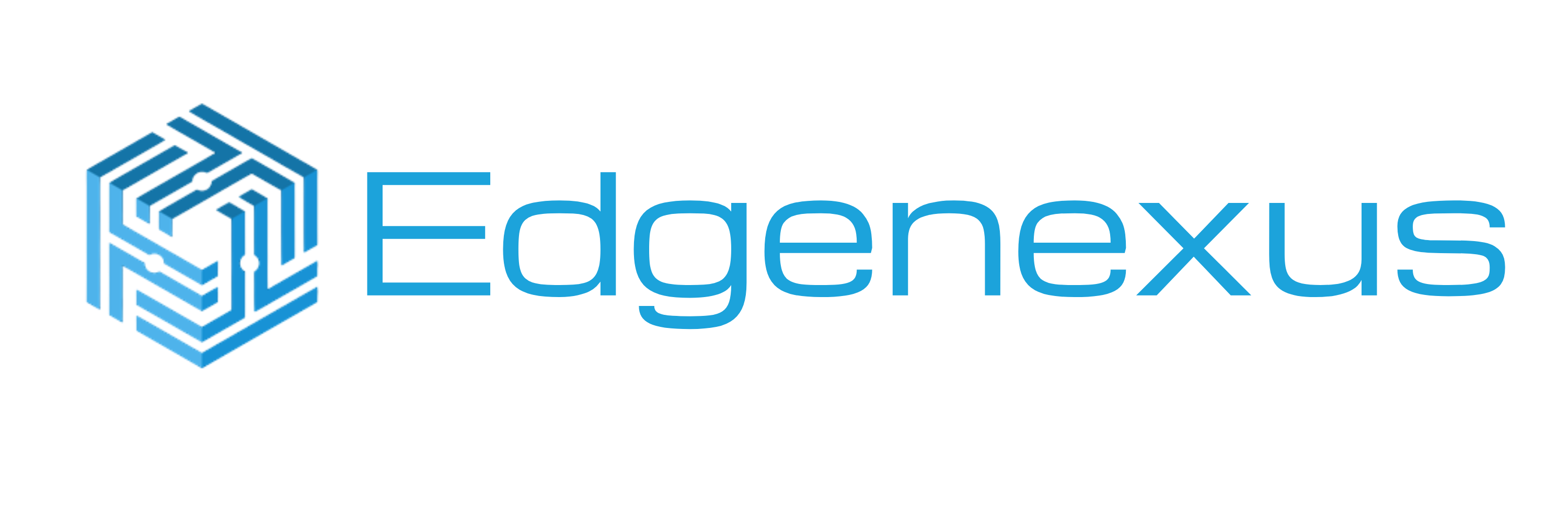Kubernetes has become the go-to platform for managing containerized applications. But directing external traffic to these applications inside a Kubernetes cluster can be tricky. That’s where the Kubernetes Ingress Controller comes in. It acts as a smart gateway that simplifies, secures, and optimizes how outside users reach your apps.
At its core, an Ingress Controller is a specialized load balancer. It manages incoming HTTP and HTTPS traffic and routes it to the right services inside your cluster. It turns raw internet requests into well-structured, secure connections to your microservices. For businesses aiming for seamless application delivery, strong security, and top performance, understanding and using the right Ingress Controller is key.
This overview explains what Kubernetes Ingress Controllers do, their benefits and limitations, and how to pick the best one. We’ll also look at leading options, including the Edgenexus Application Delivery Platform (EADP), which offers a powerful Ingress Controller designed to make Kubernetes application delivery easier and more flexible.
What Is a Kubernetes Ingress Controller?
A Kubernetes Ingress Controller is an advanced Layer 7 proxy that controls external access to cluster services. Unlike simpler Kubernetes Service types like NodePort or LoadBalancer, which handle network-level (Layer 4) traffic, an Ingress Controller deals with HTTP and HTTPS routing in a more refined way.
It serves as a single entry point for all external requests. Following rules set in Kubernetes Ingress Resources, it inspects incoming traffic (looking at host headers or URL paths) and forwards requests to the correct backend services and their pods. This setup shields your services from direct external exposure and centralizes traffic management and security.
Key roles of an Ingress Controller include:
- Providing unified external access for HTTP/HTTPS traffic.
- Balancing loads by distributing traffic across multiple pods to keep your app highly available.
- Managing SSL/TLS encryption so backend services don’t have to.
- Routing based on URL paths or hostnames.
- Automatically updating routing rules as services scale or change.
By adding this layer, Ingress Controllers simplify microservices communication and give you a clear, declarative way to expose your applications.
Why Ingress Controllers Matter
Running apps in Kubernetes offers many advantages, but managing traffic effectively adds complexity. Ingress Controllers help with this challenge by:
- Centralizing and securing access – Instead of exposing each service separately, you get one controlled gateway with enforced security policies and SSL/TLS offloading, reducing risk.
- Enabling smart traffic routing – They support advanced Layer 7 routing with rules for hostnames,paths, headers, and more. This supports strategies like A/B testing or canary deployments.Edgenexus’s flightPATH Automation, for example, lets you create custom traffic rules without coding.
- Saving costs and optimizing resources – A single Ingress Controller uses one external IP, lowering infrastructure expenses compared to multiple load balancers. Offloading SSL work frees backend resources.
- Simplifying setup – Configured via Kubernetes Ingress Resources, routing rules are easy to define and maintain. Edgenexus adds a user-friendly GUI that makes complex configurations quick and easy.
- Offering stronger observability – Enterprise Ingress Controllers provide detailed logging, monitoring, and tracing, helping you keep tabs on traffic and troubleshoot issues.
Together, these benefits make your Kubernetes environment more robust, scalable, and easier to manage.
Knowing the Limits
Ingress Controllers are powerful but have some limits:
- They only handle HTTP/HTTPS (Layer 7) traffic. Protocols like TCP or UDP need other solutions
(NodePort, LoadBalancer) or tools like Edgenexus HA Cloud Connector. - Ingress Resources are usually limited to a single namespace, which can complicate multi-tenant setups
or cross-namespace routing. Newer Kubernetes Gateway APIs aim to improve this. - Basic Ingress Controllers lack some advanced features enterprises often need, such as sophisticated WAF
(Web Application Firewall), API management, global load balancing, advanced authentication, or protocol
translation for gRPC/WebSockets.
Picking the Right Ingress Controller
Choosing the best Ingress Controller depends on your needs:
- Feature needs vs. simplicity: For simple HTTP/S routing, open-source options suffice.For complex, high-scale, or multi-cloud setups, look for controllers offering enterprise features like WAF, traffic steering (e.g., Edgenexus flightPATH), rate limiting, and rich observability.
- Performance and scalability: Make sure your controller handles your expected traffic smoothly and scales horizontally and across clusters if needed.
- Security: Beyond SSL termination, assess built-in protections like WAF, DDoS safeguards, access controls, and integration with enterprise identity systems.
- Deployment flexibility: Your controller should support your infrastructure — cloud, hybrid, on-premise, or bare metal — and work across Kubernetes platforms (EKS, AKS, GKE, OpenShift).
- Ease of use: Solutions with intuitive interfaces and clear docs reduce operational effort.Edgenexus, for example, emphasizes a straightforward GUI and transparent analytics.
- Support model: Open-source tools have strong communities but may require internal expertise.Commercial products like NGINX Plus or Edgenexus offer dedicated support and enterprise features.
Review these aspects relative to your environment to find the best fit.
Popular Kubernetes Ingress Controllers
Some well-known Ingress Controllers include:
NGINX Ingress Controller
The widely used default, based on the trusted NGINX proxy. It offers reliable routing, SSL termination, and customizable configurations via annotations. NGINX Plus adds advanced health checks, improved load balancing, monitoring, authentication, and commercial support.
Istio Ingress Gateway
Part of the Istio service mesh, this uses Envoy proxies to deliver rich traffic management, security (including mutual TLS), and observability. Ideal if you already use Istio; it may be overly complex if you just need simple ingress.
Traefik Ingress Controller
Designed for dynamic environments, Traefik automatically discovers services, offers fast performance, auto-handles SSL via Let’s Encrypt, and includes a helpful dashboard. Its middleware support extends Ingress features beyond basics, making it popular with smaller teams.
Kong Ingress Controller
Built on Kong’s API Gateway heritage, it supports advanced API management, gRPC, active health checks, authentication, and namespace isolation, with a rich plugin ecosystem for customization.
Each option has its strengths; your choice depends on your specific workload, security needs, and operational preferences. For full-featured application delivery, platforms like Edgenexus combine these container networking basics with enterprise-grade ADC capabilities.
Edgenexus: Taking Kubernetes Ingress Further
Basic Ingress is a good foundation, but modern apps demand higher performance, stronger security, smarter traffic control, and easier management across various environments. Edgenexus meets these needs with its Kubernetes Ingress Controller, a core part of its Application Delivery Platform (EADP).
Edgenexus’s solution combines fast load balancing, built-in WAF security, and intelligent traffic automation (flightPATH), all managed through an intuitive GUI. It supports deployments on cloud, hybrid, on-prem, or bare metal, giving you flexibility wherever your clusters run.
What Edgenexus delivers:
- High-speed load balancing ensures your apps stay responsive and available.
- Integrated WAF protects against attacks before traffic reaches your services.
- flightPATH Automation enables no-code custom traffic rules for A/B tests, canaries, and more.
- Easy-to-use interface cuts configuration time and operational burden.
- Comprehensive analytics provide clear insight into app performance and traffic.
- Flexible deployment fits your infrastructure strategy, including multi-cloud and bare metal.
With Edgenexus, you get more than an Ingress Controller; you gain a complete Application Delivery Controller crafted for today’s Kubernetes requirements, supporting everything from startups to global enterprises.
Final Thoughts
A Kubernetes Ingress Controller is essential for exposing your applications safely and efficiently. It offers intelligent routing, load balancing, SSL termination, and centralized traffic control. While open-source controllers like NGINX, Istio, Traefik, and Kong cover many needs, growing application demands often call for richer features and simpler management.
That’s where integrated platforms like Edgenexus shine, combining advanced Ingress with WAF, load balancing, automation, and analytics. Choosing the right Ingress solution is not just about routing it’s about empowering your apps to succeed in today’s complex environments.
Ready to simplify and secure your Kubernetes application delivery? Explore the Edgenexus Ingress Controller today or start a free trial to see the difference for yourself.
FAQs
1. What is a Kubernetes Ingress Controller?
A Kubernetes Ingress Controller is a Layer 7 proxy that manages external HTTP/HTTPS traffic, routing it to the right services inside a Kubernetes cluster.
2. How does an Ingress Controller differ from a LoadBalancer or NodePort?
Unlike NodePort or LoadBalancer (Layer 4 networking), an Ingress Controller handles advanced HTTP/HTTPS routing with features like path-based and host-based rules.
3. Why do businesses need an Ingress Controller?
It centralizes external access, improves security with SSL/TLS termination, reduces costs, enables smart routing, and simplifies application delivery.
4. Can an Ingress Controller improve security?
Yes. It manages SSL/TLS certificates, enforces access rules, and, in enterprise solutions like Edgenexus, integrates with WAF and DDoS protection.
5. What are the main benefits of using an Ingress Controller?
Benefits include centralized access, cost savings, advanced routing, observability, traffic automation, and better resource utilization.
6. What are the limitations of Kubernetes Ingress Controllers?
They only support HTTP/HTTPS traffic, often work within a single namespace, and may lack advanced enterprise features without additional tools.
7. Which Kubernetes Ingress Controllers are most popular?
The most widely used options include NGINX Ingress Controller, Istio Ingress Gateway, Traefik, and Kong.
8. How do I choose the best Ingress Controller?
Consider features, scalability, security needs, deployment flexibility, ease of use, and whether you need enterprise support.
9. What makes Edgenexus different from other Ingress Controllers?
Edgenexus adds enterprise-grade WAF security, flightPATH automation for no-code traffic rules, intuitive GUI management, and detailed analytics.
10. Does Edgenexus Ingress Controller support multi-cloud and hybrid deployments?
Yes. It works across cloud, hybrid, on-prem, and bare metal environments, giving flexibility for modern enterprise applications.










